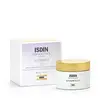What's inside
What's inside
 Key Ingredients
Key Ingredients

 Benefits
Benefits

 Concerns
Concerns

 Ingredients Side-by-side
Ingredients Side-by-side

Water
Skin ConditioningGlycolic Acid
BufferingPEG-40 Stearate
EmulsifyingGlyceryl Stearate
EmollientCetyl Alcohol
EmollientStearyl Alcohol
EmollientButylene Glycol
HumectantIsostearyl Isostearate
EmollientCetyl Palmitate
EmollientCyclopentasiloxane
EmollientDimethicone
EmollientGlycerin
HumectantAmmonium Hydroxide
BufferingPhenoxyethanol
PreservativeCyclohexasiloxane
EmollientBorago Officinalis Seed Oil
EmollientOctyldodecanol
EmollientCellulose Gum
Emulsion StabilisingXanthan Gum
EmulsifyingDisodium EDTA
Ethylhexylglycerin
Skin ConditioningGlyceryl Polyacrylate
Tocopheryl Acetate
AntioxidantIsocetyl Alcohol
EmollientBHT
AntioxidantCeramide NP
Skin ConditioningWater, Glycolic Acid, PEG-40 Stearate, Glyceryl Stearate, Cetyl Alcohol, Stearyl Alcohol, Butylene Glycol, Isostearyl Isostearate, Cetyl Palmitate, Cyclopentasiloxane, Dimethicone, Glycerin, Ammonium Hydroxide, Phenoxyethanol, Cyclohexasiloxane, Borago Officinalis Seed Oil, Octyldodecanol, Cellulose Gum, Xanthan Gum, Disodium EDTA, Ethylhexylglycerin, Glyceryl Polyacrylate, Tocopheryl Acetate, Isocetyl Alcohol, BHT, Ceramide NP
Water
Skin ConditioningLactic Acid
BufferingGlycerin
HumectantPentylene Glycol
Skin ConditioningPropanediol
SolventSodium Hyaluronate Crosspolymer
HumectantTasmannia Lanceolata Fruit/Leaf Extract
AntioxidantAcacia Senegal Gum
MaskingXanthan Gum
EmulsifyingIsoceteth-20
EmulsifyingTrisodium Ethylenediamine Disuccinate
Sodium Hydroxide
BufferingEthylhexylglycerin
Skin Conditioning1,2-Hexanediol
Skin ConditioningCaprylyl Glycol
Emollient
 Reviews
Reviews

Ingredients Explained
These ingredients are found in both products.
Ingredients higher up in an ingredient list are typically present in a larger amount.
Ethylhexylglycerin (we can't pronounce this either) is commonly used as a preservative and skin softener. It is derived from glyceryl.
You might see Ethylhexylglycerin often paired with other preservatives such as phenoxyethanol. Ethylhexylglycerin has been found to increase the effectiveness of these other preservatives.
Glycerin is already naturally found in your skin. It helps moisturize and protect your skin.
A study from 2016 found glycerin to be more effective as a humectant than AHAs and hyaluronic acid.
As a humectant, it helps the skin stay hydrated by pulling moisture to your skin. The low molecular weight of glycerin allows it to pull moisture into the deeper layers of your skin.
Hydrated skin improves your skin barrier; Your skin barrier helps protect against irritants and bacteria.
Glycerin has also been found to have antimicrobial and antiviral properties. Due to these properties, glycerin is often used in wound and burn treatments.
In cosmetics, glycerin is usually derived from plants such as soybean or palm. However, it can also be sourced from animals, such as tallow or animal fat.
This ingredient is organic, colorless, odorless, and non-toxic.
Glycerin is the name for this ingredient in American English. British English uses Glycerol/Glycerine.
Learn more about GlycerinWater. It's the most common cosmetic ingredient of all. You'll usually see it at the top of ingredient lists, meaning that it makes up the largest part of the product.
So why is it so popular? Water most often acts as a solvent - this means that it helps dissolve other ingredients into the formulation.
You'll also recognize water as that liquid we all need to stay alive. If you see this, drink a glass of water. Stay hydrated!
Learn more about WaterXanthan gum is used as a stabilizer and thickener within cosmetic products. It helps give products a sticky, thick feeling - preventing them from being too runny.
On the technical side of things, xanthan gum is a polysaccharide - a combination consisting of multiple sugar molecules bonded together.
Xanthan gum is a pretty common and great ingredient. It is a natural, non-toxic, non-irritating ingredient that is also commonly used in food products.
Learn more about Xanthan Gum